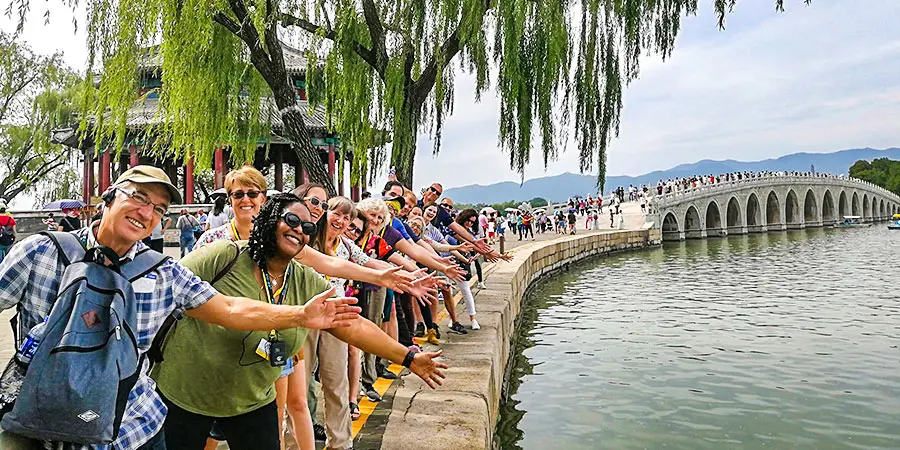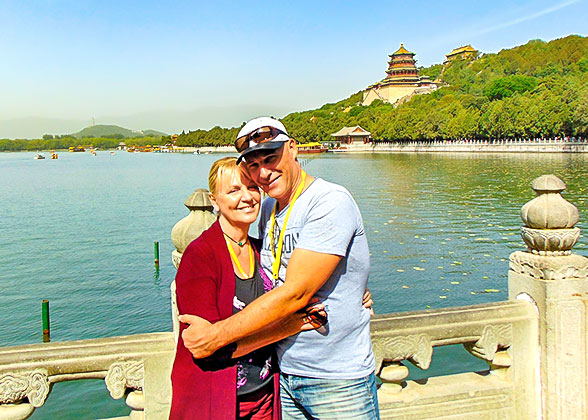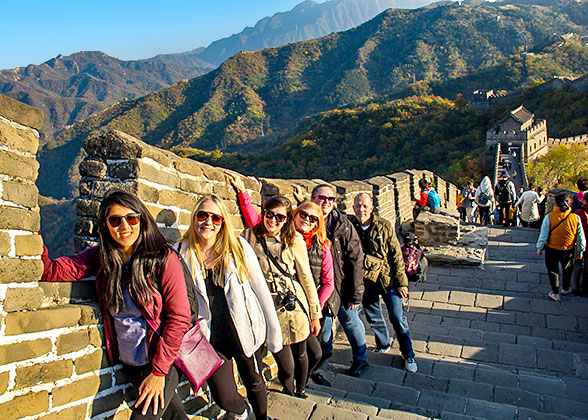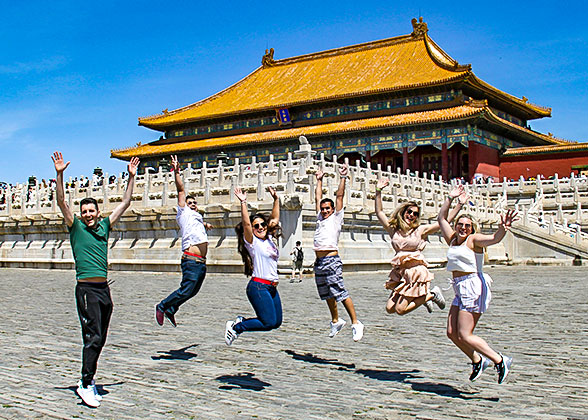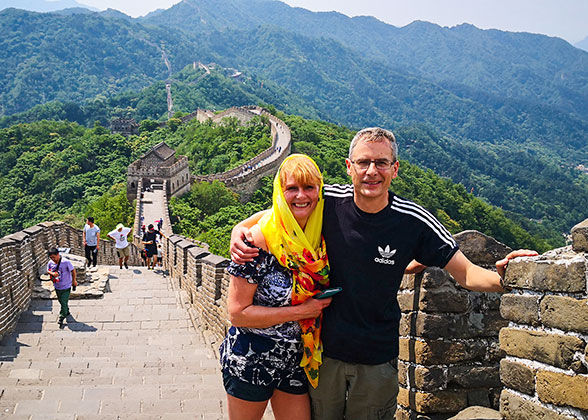Summer Palace (Yiheyuan)
Why visit the Summer Palace?
Architecture & Nature Harmony
Blend of Styles from Across China
China's Only Intactly Preserved Large-Scale Royal Garden
Recognition as a World Heritage Site and More
Plus, it's a National 5A-Grade Tourist Attraction, China's top tourism standard. Together with the Chengde Mountain Resort, the Humble Administrator's Garden, and the Lingering Garden in Suzhou, it is renowned as one of the "Four Great Famous Gardens of China".
What to See: Four Major Areas in Summer Palace
Front Longevity Hill Area: Magnificent Buddhist Architecture Complex
Stroll down the exquisitely painted Long Gallery along the shore, and step up to the Hall of Dispelling Clouds, the central and grandest structure displaying an immense gilded statue of bodhisattva. Further up, the Tower of Buddhist Incense stands tall, and grants you a breathtaking panorama of the royal garden.
Rear Longevity Hill Area: Regional Buildings & Intermountain Views
The Four Great Regions’ red and white palaces and pagodas, cascading down the hillside, model after Tibetan temples, while the Suzhou Market Street, consisting white-walled, grey-tiled houses, suddenly bring you to the waterside town in south China Yangtze River. And then there's the peaceful Back Lake, winding through lush forests where only the songs of birds and the murmur of water fill the air.
Kunming Lake Area: Expansive Waterscape
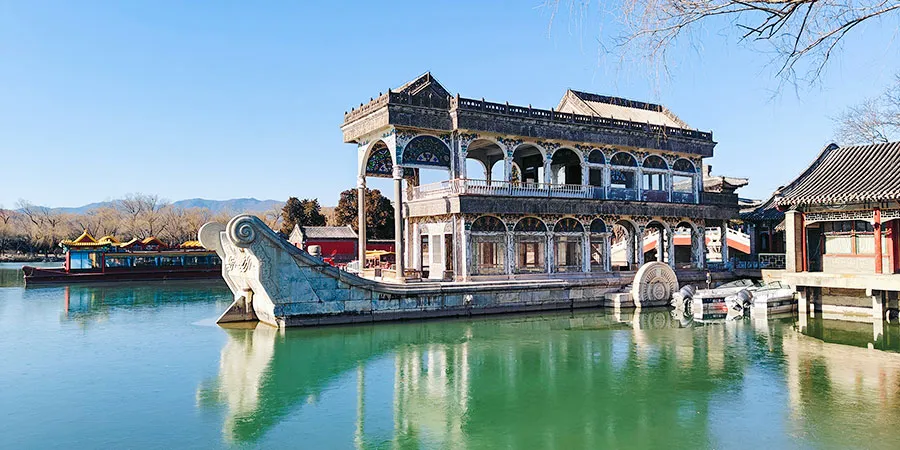
Dotting Kunming Lake are South Island Lake, Hall of Recognition of Talent Island, and Site of the Mirror of Government Tower Island, symbolizing three Chinese mythical fairy islands, while the Seventeen-Arched Bridge spans the water like a white jade belt, connecting the South Lake Island to the mainland.
Court Area: Royal Political & Living Scenes
The Court Area in the northeast of the Summer Palace is mainly for governance and daily life. The Hall of Benevolence and Longevity, the core structure, towering on a marble pedestal served as the hub where the emperor met officials. North of it, the Garden of Virtue and Harmony, once a royal theater, now displays operatic artifacts to glimpse into the royals' entertainment. In the west, you will find Empress Dowager Cixi's (1835~1908) bedroom Hall of Joyful Longevity furnished luxurious furniture
Summer Palace History
![]() In 1750, Emperor Qianlong ordered to dredge silt from waters in Beijing’s western suburbs, link the major lakes, and build structures on the causeways and surrounding hills, therefore the Summer Palace formed, originally called Garden of Clear Ripples (Qingyiyuan). Upon completion in 1764, the Summer Palace served as a summer retreat, a venue for ceremonies, and a site for naval drills.
In 1750, Emperor Qianlong ordered to dredge silt from waters in Beijing’s western suburbs, link the major lakes, and build structures on the causeways and surrounding hills, therefore the Summer Palace formed, originally called Garden of Clear Ripples (Qingyiyuan). Upon completion in 1764, the Summer Palace served as a summer retreat, a venue for ceremonies, and a site for naval drills.![]() In 1860, the Summer Palace was burned down by the Anglo-French Allied Force.
In 1860, the Summer Palace was burned down by the Anglo-French Allied Force.![]() From 1885 to 1894, most of the garden had undergone reconstruction and it was renamed as the Summer Palace (Yiheyuan). It was recorded that Empress Dowager Cixi embezzled navy funds to reconstruct it as a resort where to spend the rest of her life.
From 1885 to 1894, most of the garden had undergone reconstruction and it was renamed as the Summer Palace (Yiheyuan). It was recorded that Empress Dowager Cixi embezzled navy funds to reconstruct it as a resort where to spend the rest of her life.![]() In 1900, the Summer Palace was occupied by the Eight-Power Allied Forces for a year, resulting in vandalized decorations and looted interior furnishings. Restoration commenced in 1902, and since 1914, it has been open to the public.
In 1900, the Summer Palace was occupied by the Eight-Power Allied Forces for a year, resulting in vandalized decorations and looted interior furnishings. Restoration commenced in 1902, and since 1914, it has been open to the public. ![]() Over the past decade, the Summer Palace has become Beijing’s most popular garden, attracting an average of over 15 million visitors annually, with holiday peak daily visitor counts surpassing 100,000.
Over the past decade, the Summer Palace has become Beijing’s most popular garden, attracting an average of over 15 million visitors annually, with holiday peak daily visitor counts surpassing 100,000.
Tour Planning
Which Gate to Enter
Recommended Route
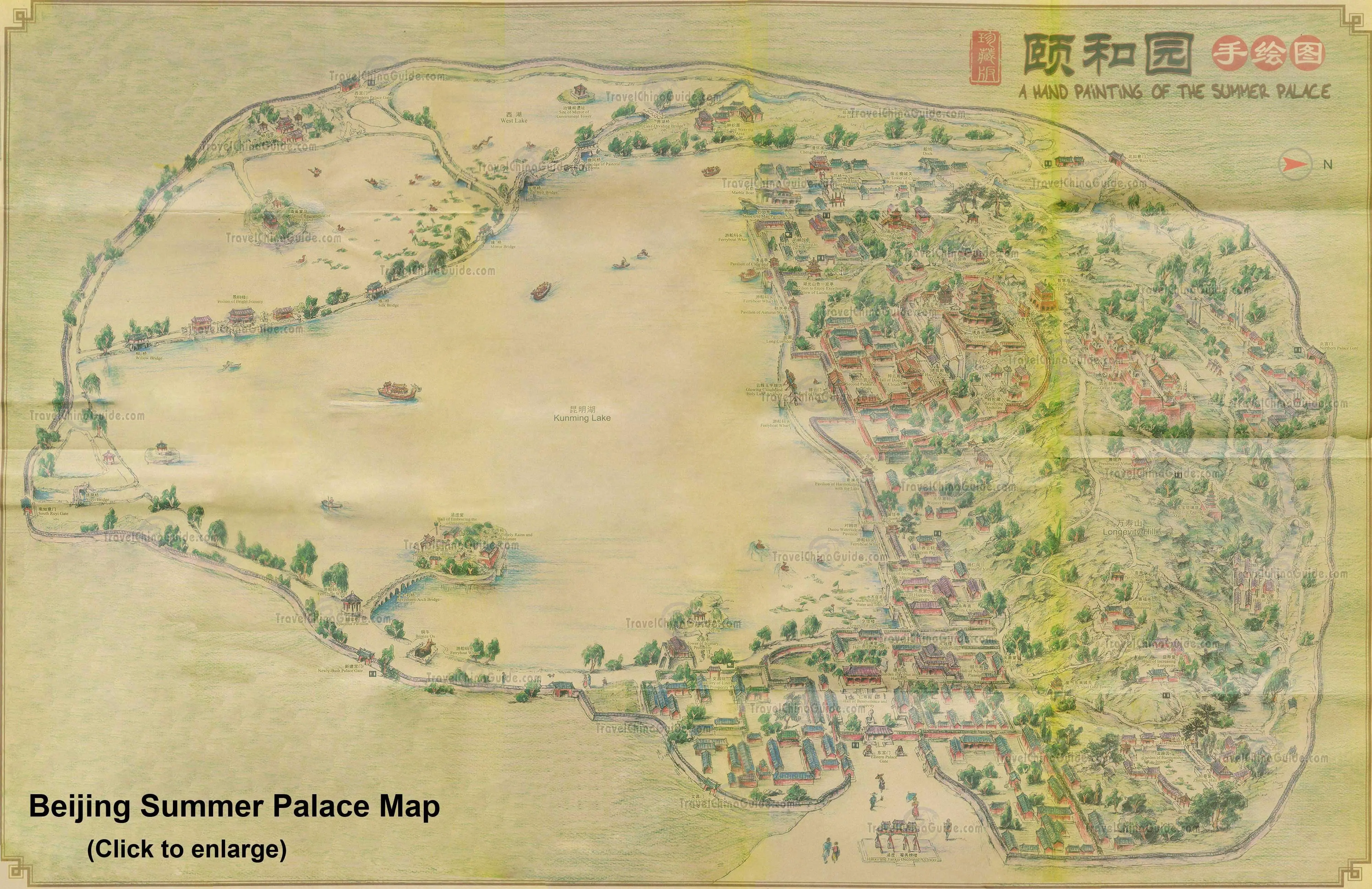 |
| Summer Palace Map (Click to Enlarge) |
Or, you can reverse the above route by entering from the North Palace Gate. The difference is that you will start from some hilly paths, which require enough energy to climb.
A classic route like the East Palace Gate Route generally takes 2 to 3 hours. If time permits, you can spend 5 to 6 hours for an in-depth tour by boating on the Kunming Lake and exploring other spots like the West Causeway and South Lake Island.
Best Visit Time
Recommended Tours
Getting to the East Palace Gate (Donggongmen)
- Subway: Exit C2 at Xiyuan Station on Line 4, then follow signs for a 10-minute walk.
- Bus: Take bus No. 303, 332, 346, or 584, get off at Summer Palace Station (Yi He Yuan, 颐和园), and walk for 3 minutes.
Getting to the North Palace Gate (Beigongmen)
- Subway: Exit D at Beigongmen Station on Line 4, then walk west for 5 minutes.
- Bus: Take bus No. 303, 332, 346, 384, 394, 563, 584, 601, or Sightseeing Bus 3, get off at Summer Palace North Palace Gate Station (Yi He Yuan Bei Gong Men, 颐和园北宫门), and walk for 5 minutes.
Summer Palace Tickets Price
| Ticket Type | Price (CNY) | |
|---|---|---|
| April to October | November to March | |
| Combo Ticket | 60 | 50 |
| Entrance Fee | 30 | 20 |
| Garden of Virtue & Harmony | 5 | |
| Tower of Buddhist Incense | 10 | |
| Summer Palace Museum | 20 | |
| Suzhou Market Street | 10 | |
Summer Palace Beijing Opening Hours
| April - October | November - March |
|---|---|
| 06:00 - 20:00, Last Entry 19:00 | 06:30 - 19:00, Last Entry 18:00 |
Further Reading:
Top 10 Things to Do in Beijing
Top 10 Places to Visit in Beijing
Where to Go in Beijing in Spring - Top 10 Destinations
15 Wonderful Places to See Snow in Beijing
Top 10 Beijing Historical Sites You Should Not Miss

